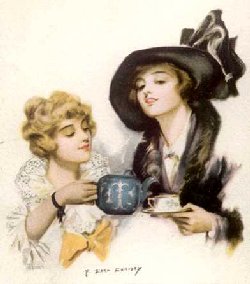 A Social History of Tea
A Social History of Tea
Jane Pettigrew
The National Trust
Every afternoon at 3pm, I have a cup of tea. It doesn’t matter the weather or the season, if it’s hot I’ll have it iced, but every afternoon, barring some great calamity, I take a break from my day to have a cup of tea and something sweet.
Tea is one of those things that we sort of take for granted; less popular than coffee, it’s still typical in many homes, particularly in Eastern Canada where I’m from originally. There, harsh orange pekoe tea can sit and stew for hours, with a couple more bags and a top up of water the only acknowledgement that the pot might need dumping or cleaning.
Jane Pettigrew is one of the UK’s tea experts, having run a tea shop for many years and written a number of other books on the subject .
A Social History of Tea traces the importance of tea to Britain from the seventeenth century onward, exploring its arrival in England, its origins and the politics surrounding the commodity. Pettigrew looks at how tea became popular, first with the upper classes, then with the middle classes and the poor.
A middle chapter explores the ritual of afternoon tea, covering etiquette and appropriate menus, including the difference between afternoon tea and high tea, which are, in fact, very different meals.
Later chapters cover the 20th century, and North American readers will see similarities in the tea breaks given to British workers with our own coffee breaks, and the section about the rationing of tea during war time including the many uses for used tea leaves is both informative and amusing.
The book also offer a visual history of tea, with images of everything from fine works of art showing the consumption of tea, to photographs of tea sets, pots, table setting and tea gowns. Early 20th century tea rooms also feature prominently, and what history buff hasn’t dreamed of a tea dance at the Palm Court of the Waldorf Hotel, suitably dressed for the era?
Fans of a good cuppa will be intrigued by the history of their favourite beverage, as well as all the trappings, politics and intrigue that goes with it. While there are a few chapters that deal with the types of tea, how they are processed, etc., this really is a work about the social history of tea, and its continued place on the table and in the lives of the British people.
